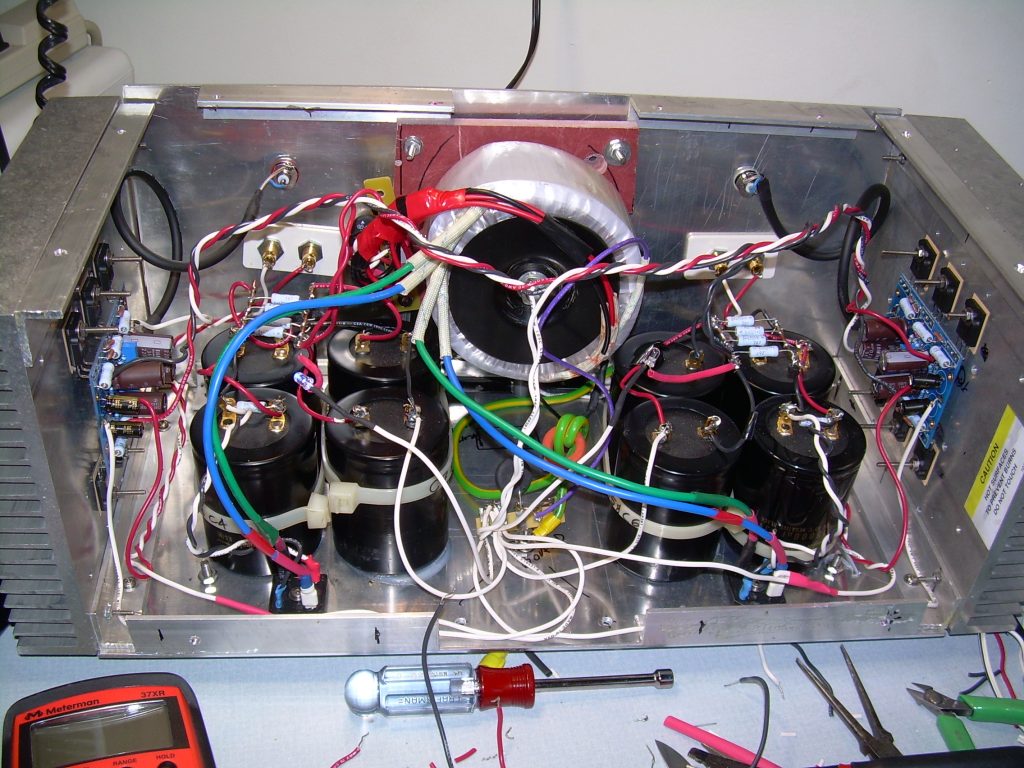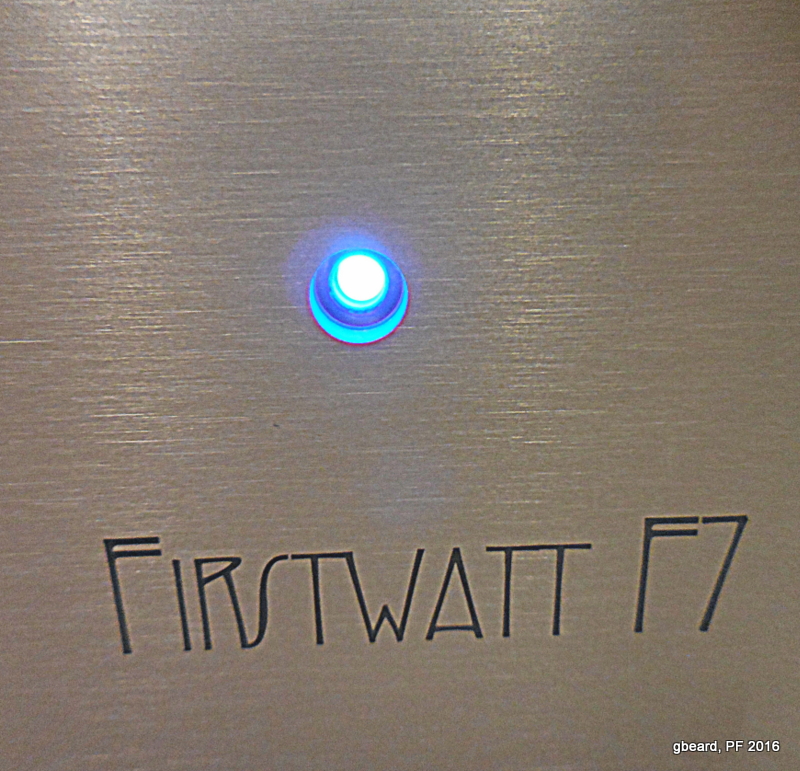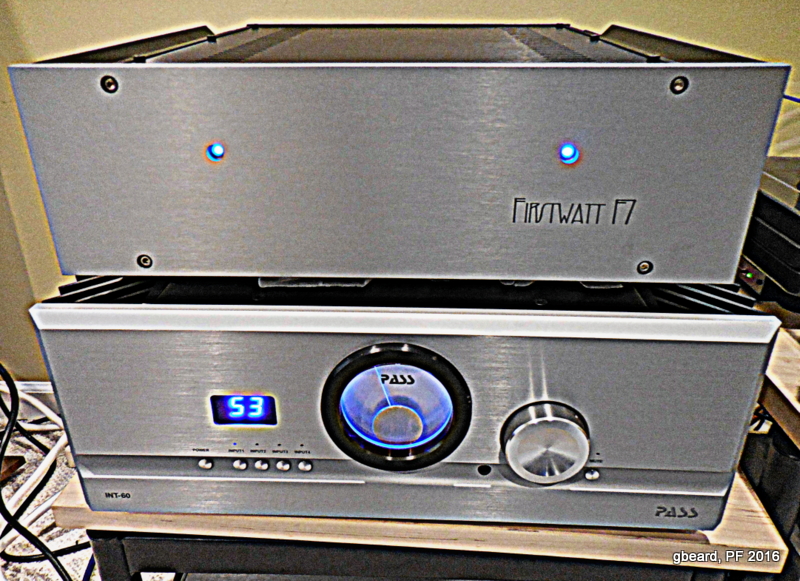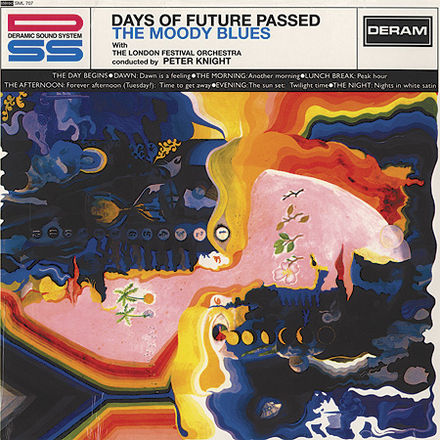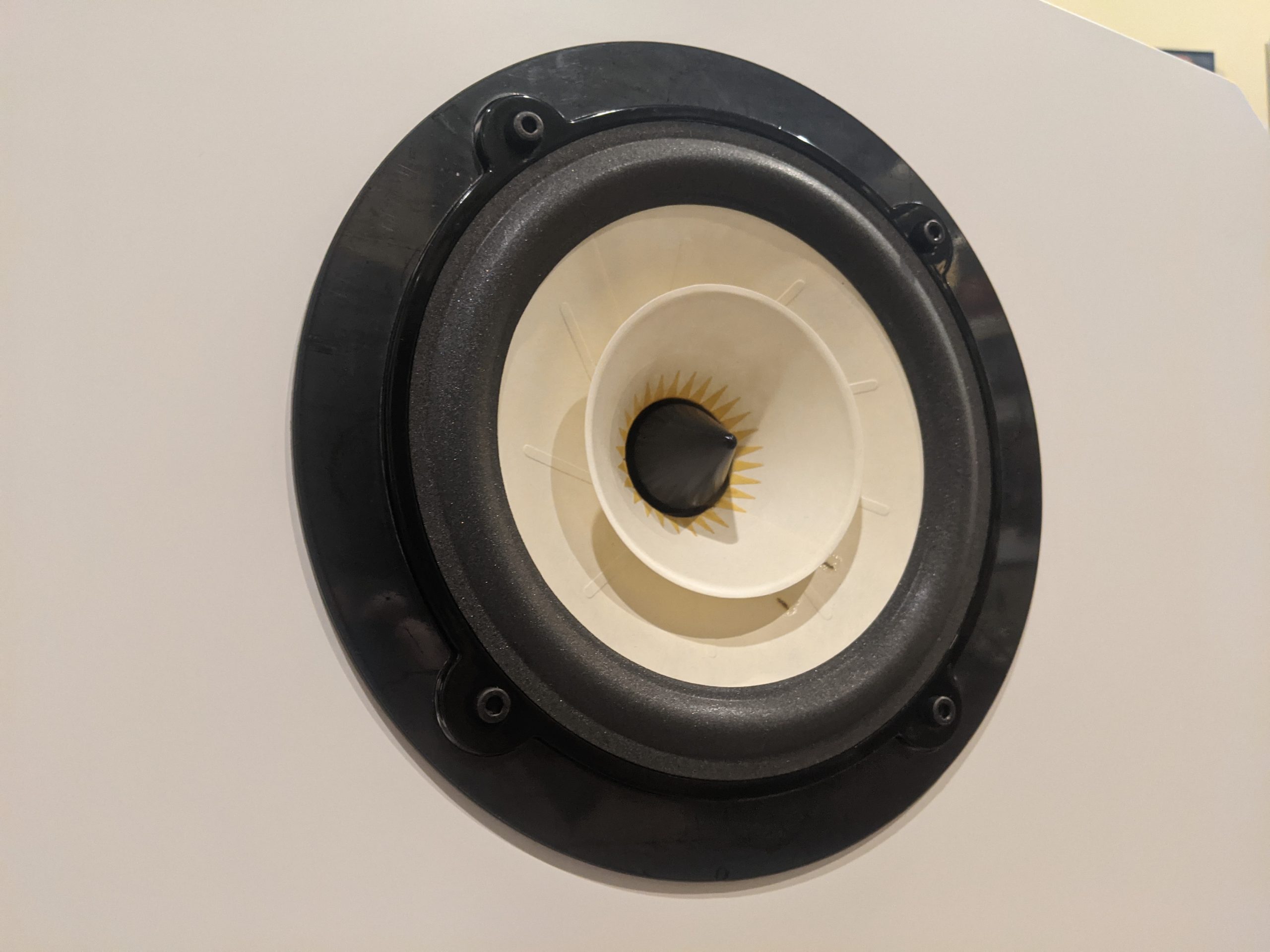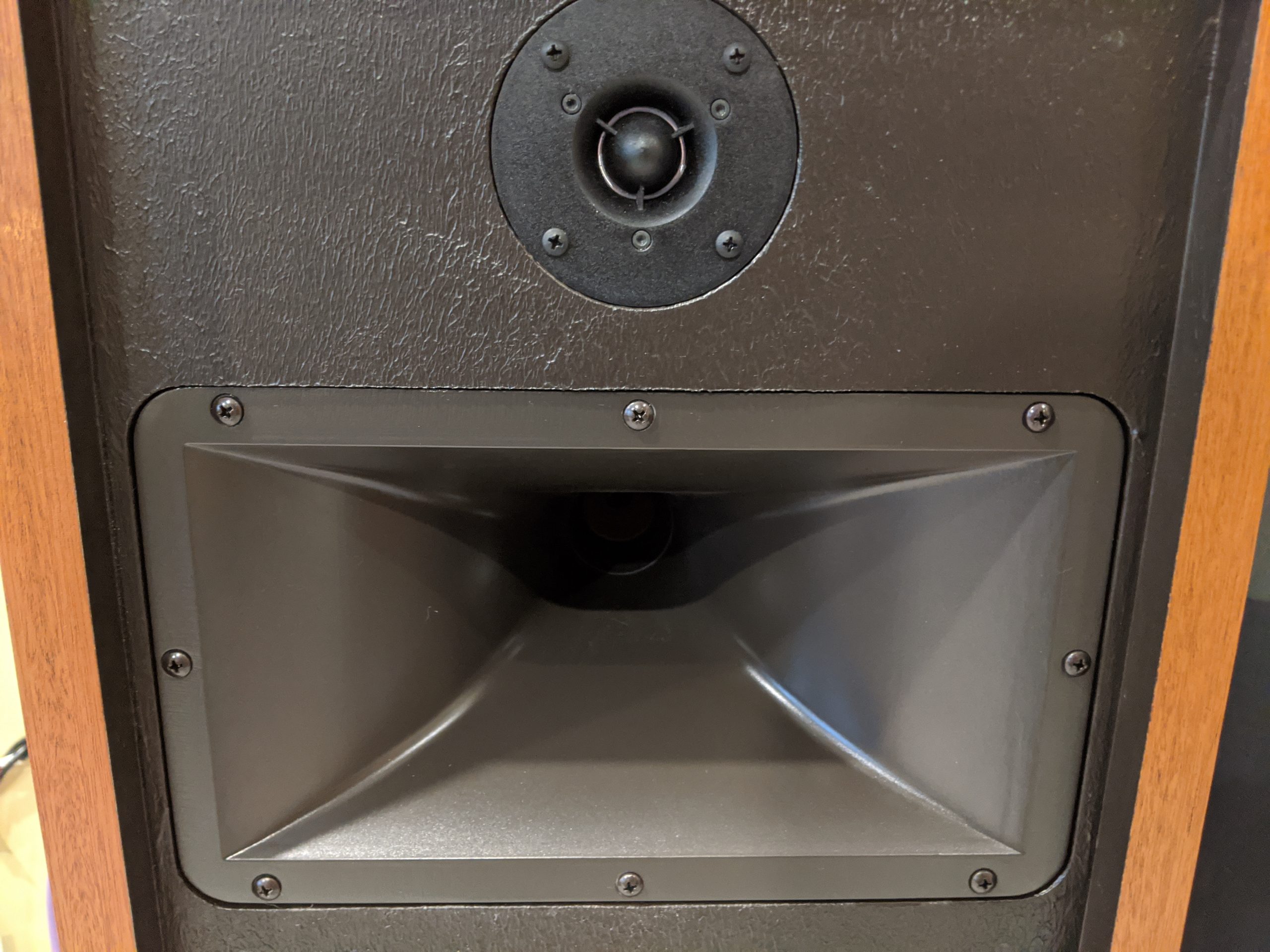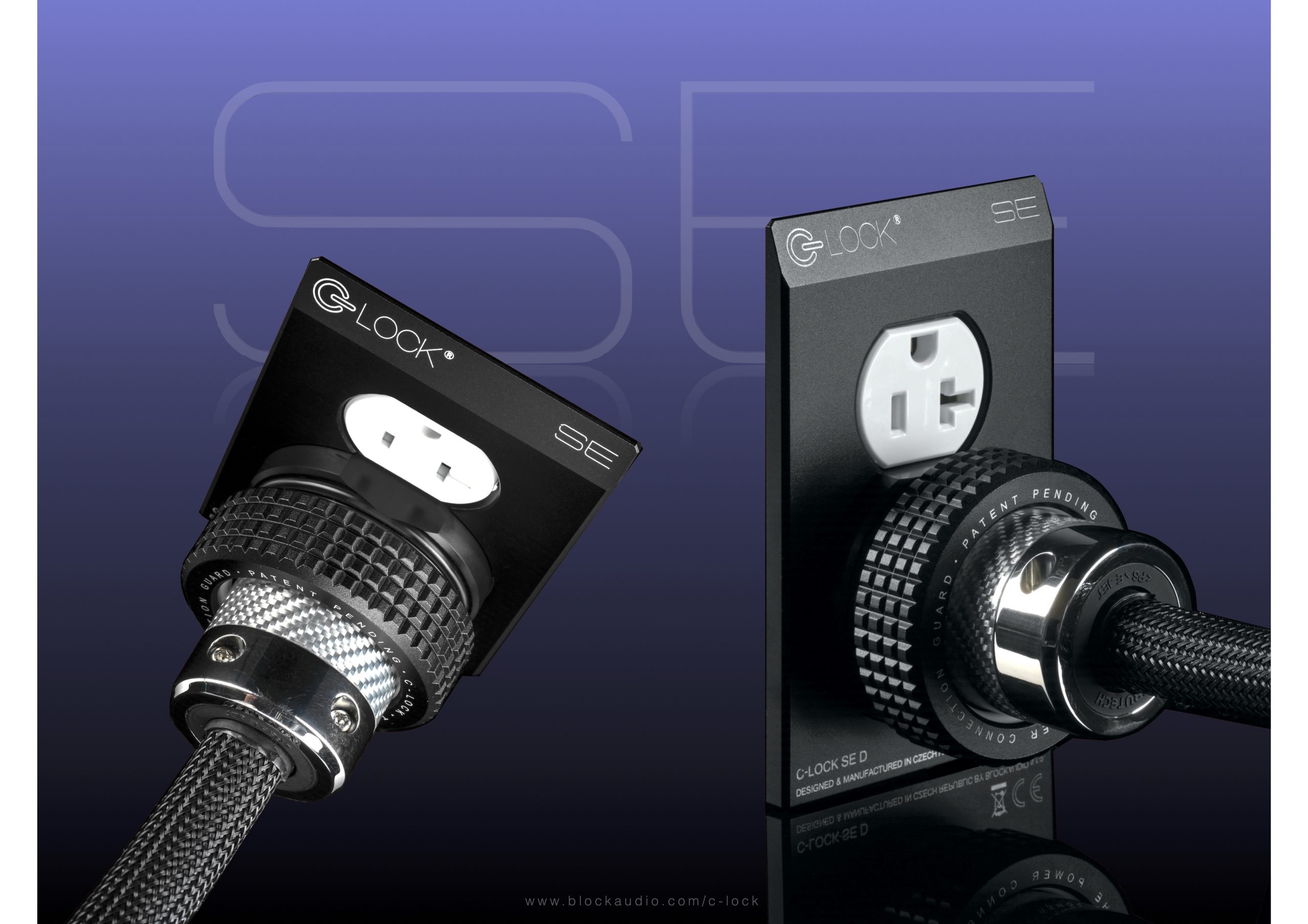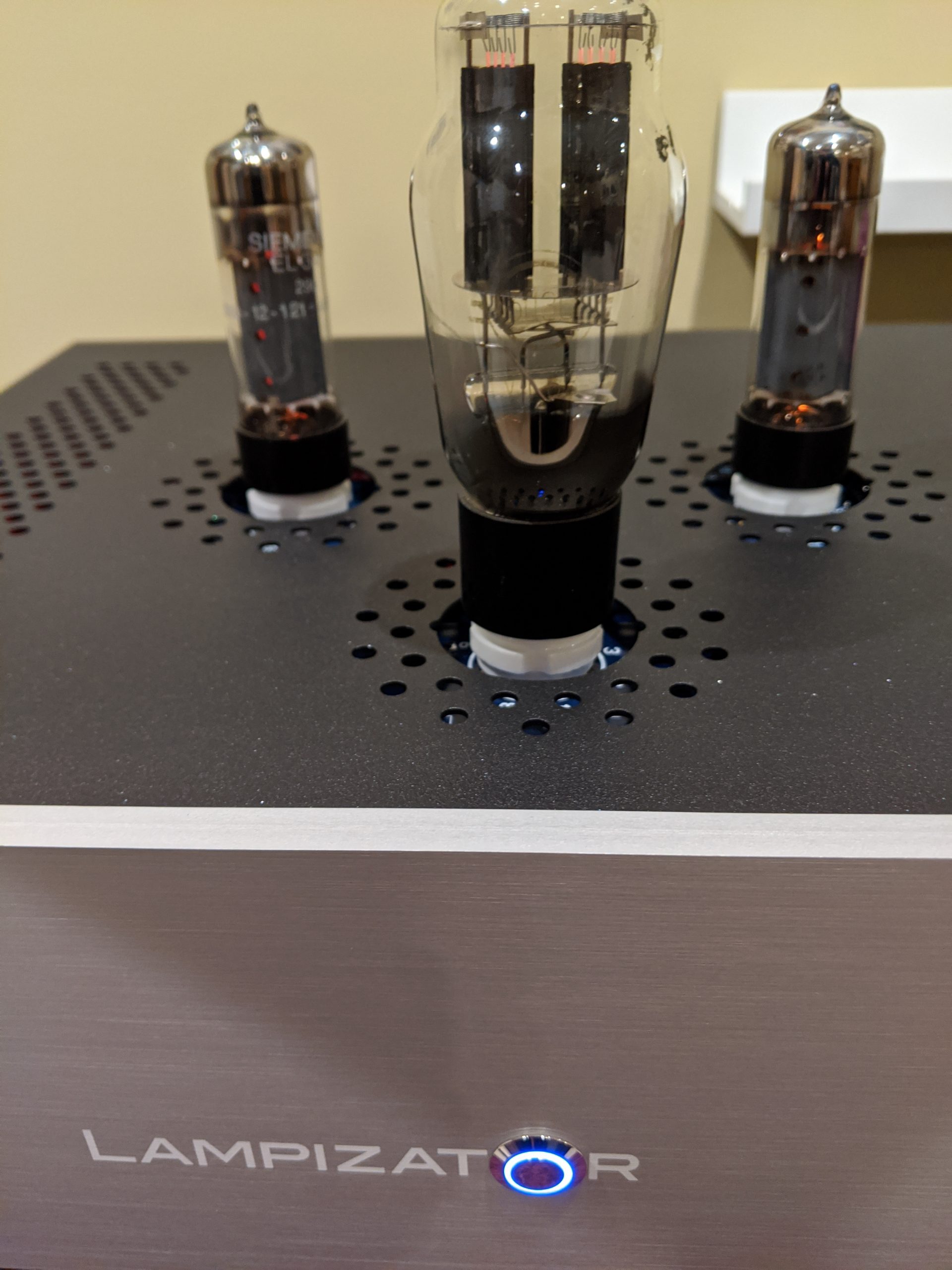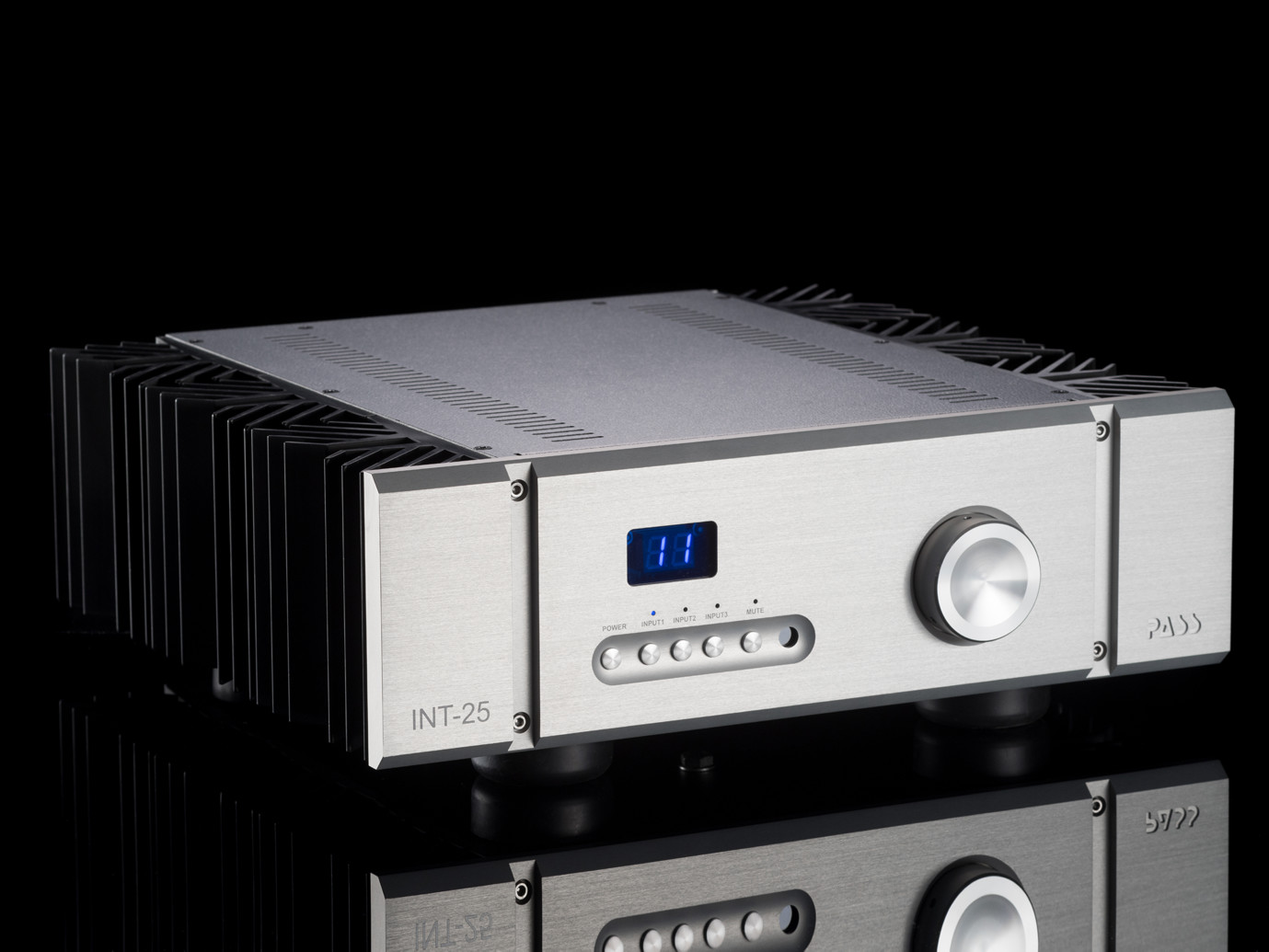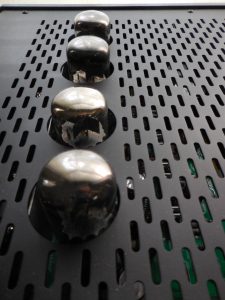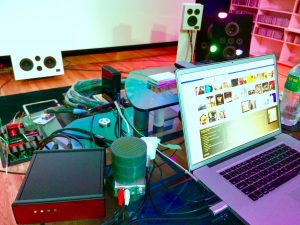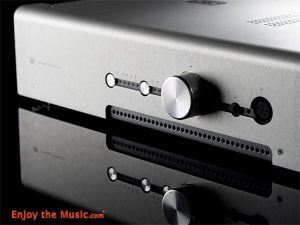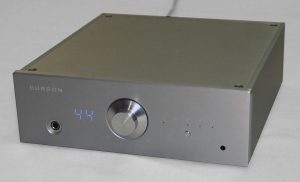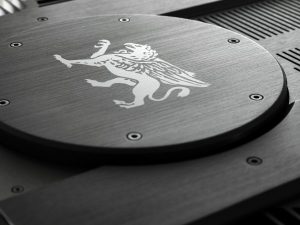When I first requested an opportunity to write about the next new First Watt amplifier, I was candid with Nelson Pass that it was possible my Von Schweikert Audio VR-35 Deluxe loudspeakers and passive Bent Audio AVC-1 linestage might not be a good match for any First Watt amplifier. Several months later, I received a note from Nelson informing me that a First Watt F7 was cruising its way from his Sea Ranch, CA. digs to the Tune Saloon in Southern Indiana. My first thought was to check the amplifier's spec's.
The F7 is a completely different amplifier-animal from my no-gain-of-its-own buffer F4 clone; and yet I was still a bit skeptical that it would have enough power. Nelson didn't seem to hold the same level of reservation. His quick email reply suggested an engineer's cyber-shoulder shrug; try it, you might like it, was the general tenor of his response. So, the torture test was on; 20 Class A watts of F7 muscle vs. a near full-range speaker with an 8 Ohm nominal Impedance, and 90dB sensitivity. A relatively easy load, yes, but with two 6" drivers, and 1" tweeter in an MTM configuration, as well as a 10" rear-firing woofer, the outcome was anything but certain.
Simple, but no Simpler
First Watt is Nelson Pass' fertile electronic imagination come to fruition. His amplifiers look deviously simple. My home-built version of the First Watt F4 does not look simple—it looks more like a home for audiophile mice.
Still, the fact that I could build the F4 in any form, highlights both the generosity and brilliance of Mr. Pass: Most of his FW circuit schematics—which are often released to the DIY community after all limited edition amplifiers are sold—can be built by damn near anyone with a little electronic knowledge, some basic tools, and the desire to do so. And while said designs might be simple in a general sense, I seriously doubt the thought behind them is anything less that complexity squared. Just trying to digest Nelson's written thoughts on these clever designs makes my head swim. And that glorious sound will be the likely result of such a build (even true for mine, despite this constructor's lack of ability), only reinforces how amazing the First Watt concept is for audio and music lovers.
If you've ever walked your way around a First Watt amplifier, then you know there are physical similarities between them. All operate in Class A, and I believe they all share the same basic chassis. But while they may appear a litter of sonic siblings, each has its own uniquely circuited personality. Some are single-ended, some are balanced. More than a few use negative feedback. Power transistor choices vary—the F7 uses MOSFETs—others use JFETs or even SITs. Each pony in the First Watt stable has a few new tricks in the saddle bag, and the F7 is no different. It is a single-ended input, two stage push-pull amplifier. Output is 20 watts per channel into 8 ohms with 14dB of gain, very low distortion, and damping factor of >100. But there is an interesting twist to this rather prosaic beginning.
From the website, Mr. Pass explains: "The F7 is a very unique power amplifier, a two-stage push-pull JFET/MOSFET topology with fewer parts than any First Watt amplifier to date and incorporating a very interesting balance of very low negative voltage feedback and a little bit of positive current feedback to give an astonishing measure of control over reactive loudspeaker loads." And from the First Watt F7 manual: "Modest amounts of negative feedback are balanced in counterpoint to small amount of positive current feedback, creating an equilibrium where the output impedance approaches zero, improving transient and frequency response."
It sounds like I could use a little Positive 'Current' Feedback.
Researching the F7
I've spent months listening to the F7. My initial reaction was "holy-crap wow!" and that general sense of auditory joy has never waned. My Pass Labs XA 30.8 is an incredible amplifier, and its praises are being sung by far more experienced voices than mine. It is important to me as an audio writer, reviewer, that I find validation—not necessarily agreement—of my own opinions in those of others. As my knowledge base grows, and confidence in my own hearing becomes higher, what I write on the subject becomes significantly better. While it's up to others to decide if my opinions carry weight, when I tell you that the First Watt F7 has sonic virtues that in many ways rival that of its kissin' cousin, I mean it.
So, the results of my decidedly unscientific experimentation are in, but before I assess the F7's sound qualities, I need to make sure said results are communicated accurately:
Can the First Watt F7 drive my VSA VR-35's?
Well yes, yes, it can. And quite well too, I might add.
Are there downsides to this partnership?
I normally listen at levels well under 80dB. I realize this is low for some people. With the F7 in my system, I needed to turn my volume control up quite high to get to my sweet spot of the 60-80 range. Even turned up all the way, rave levels are unattainable. Once pushed passed the 80dB mark—near the top of my volume range—I noticed the 7 having a little difficulty controlling the woofer on certain recordings, as well as a little bit of noticeable distortion creeping in at the apex of loudness. Of course I was driving the amplifier off an electrical cliff, and louder than I would ever listen normally, so this shouldn't be unexpected. It should be noted that this is a personal system observation, skewed perhaps by the passive line stage. In general, the Slagleformer based Bent sounds amazing with the First Watt, but I keep having the same thought: That a high gain active preamplifier might sound even better. While I haven't had that pleasure, I have connected the F7 to the preamp out of a Pass Labs INT-60 (in for review). While I can still peg the volume at the top of the INT-60's range without blowing me out of the room, I also found that when cranked up, there was a perceptible and positive difference which I attribute to the preamplifier's modest 6dB of gain.
Could the F7 be the amplifier of choice for the 35's?
Absolutely yes, it could. Although the F7, within my system, cannot play Metallica at 95dB peaks with my speakers. Even if that was possible, I doubt I'd ever do it in my room. I'm dumb, not stupid, and I value what is left of my hearing. Being a realist, I'm not sure the F7-VSA combination is a perfect electrical match, but sonically, there is a wonderful synergy between the two. And while cranking the volume level to the highest point is not going to happen without a downside, relatively sane volume levels are sonic gold.
Thar's Magic in Them MOSFETS!
Now that I've spent a couple paragraphs slightly beating up the First Watt F7 as an engine for my speaker, I'm going to tell you why you should want one for yours.
Simple magic. Yes, the F7 has been liberally sprinkled with Sea Ranch fairy dust.
While most audiophiles would probably pair this amplifier with a more efficient transducer, until pushed beyond stable boundaries, the F7 sounds smashingly good with the VSA's. Within my preferred operating envelope (not so loud), the F7 epitomizes sonic transparency. The tired cliché of an open window to the music certainly applies. Female voices and piano have been a special treat. One late evening I sat entranced listening to Natalie Merchant as she sang every cut from Tiger Lilly, just for me! (Thanks for the idea, John Richardson.) Small combo jazz, acoustic Bluegrass, chamber music… The F7 loves the small, quiet, and unamplified music. There is a delicacy to the inner-spaces that continues to draw me in, and not let go. Conversely, the F7 can rock too. While curiously sounding a bit more raw and unpolished than the XA 30.8, it dishes a head-bangin' mojo that is impossible to ignore, even if the volume isn't at concert levels. I loved listening to the Gin Blossoms, Talking Heads, Led Zep...You name it. The F7's 20 watts drive hard, and stop on a dime with great transient speed and high level of dynamic contrast.
Most high-end amplifiers do the basic "hifi" thing very well—detail, resolution, treble, midrange and bass—but the best I've heard also have exceptional musical flow; an audio awareness that is difficult to describe, yet one that consistently begs for my ear's attention and causes my feet to move in otherworldly ways. The F7 definitely delivers a holistic and effortless stream of musical information.
One of the many strong points of the F7 is its magnificent sound staging. I'm not throwing that "magnificent" term around lightly either. The F7's holographic presentation can be thrilling with the right recording. Ethereal images, floating and layered; a stage as wide as my room, pushing back the rear wall a smidgen; occasionally even tugging at my shirt-tail in front. Dynamic contrast is excellent and I took special note of how much impact there is from the lower midrange and upper bass octaves. Drums, bass, the lower registers of the piano, they all had terrific shadings of light to dark, quiet to loud.
There is beautiful color and texture within the F7 too, and it wowed me with its midrange performance. Clarity is excellent. Tonality is outstanding. There is a sense of realness to the music that forces me to wonder—who needs tubes? While listening to Alison Krause and Union Station's New Favorite, I noticed such real and rich texture, that it almost seemed as if I could reach out and touch the steeliness of Jerry Douglas' Dobro strings. And then there was the hit of one particular evening: The Moody Blues "The Day Begins", from the original 1967 Deram vinyl recording Days of Future Passed. A more cathartic 5 minutes and 50 seconds there has never been in the Tune Saloon… (Therapeutic assist credited to the Pass Labs XP-15 phono stage.)
The F7's resolution of the musical message is high. Individual voices and instruments are easily followed; yet the whole is communicated to the listener…Musical flow…It's quite fabulous, really. Damn the trivial loss of steam and woofer control when turned up too loud; many times I simply lost myself in the sheer musicality of the F7's presentation. It is this least definable audio quality—musicality—that delivers the shiver of goose bumps and compels me to listen until the wee hours, long after I should have donned my stocking cap for a long winter's nap.
Conclusive Findings
Is the F7's great sound due to Mr. Pass' Positive Current Feedback circuit, or the less-is-more design logic?
I suspect so, yes.
Does the F7 sound like a transistorized brother to a valve amplifier, or just a really fantastic Class A solid-stater?
You betcha it does, brother.
Did I love listening to the F7's deft touch, incredible inner-resolution, and blinding transient speed?
Oh hell yes!
In the nutin's perfect category, I must reiterate a few observations. Clearly, the F7 requires a kindred spirit of a loudspeaker, and with my system, I could perhaps benefit from an active preamp. While generally smooth and silky in presentation, the F7 is only slightly warmer than neutral, and will not wash a crappy recording in milk and honey. You'll get a taste of whey and honeycomb too. And yep, burning the First Watt will cause your cooling bill to go up a bit, but conversely, your heating bill will go down. The F7 may be a single-ended input, but as an HVAC device, it is quite balanced. (Well, I thought that was funny, but then, I'm me.)
While it may not work for everyone, the F7 offers outstanding frequency response from top to bottom, wonderful tone, and truthful resolution wrapped in a tube-like charm; all for a reasonable $3K. In addition, it seems to have the electrical hutzpah to drive speakers that on paper, might not seem to be a proper companion. Yes, this latest Nelson Pass First Watt amplifier is terrific. With system caveats excepted, one of the best I've heard. Period.
First Watt F7 Power Amplifier
Retail: $3000.00 USD
Pass Laboratories
Specifications
- Measured at 120 V AC and an 8 ohm load:
- Distortion @ 1 watt 0.05%
- Input Impedance 10 Kohm
- Gain 14.5 dB
- Input Sensitivity (1 watt) 0.53 V
- Input Sensitivity (max output) 2.7 V
- Damping Factor >100
- Output power 8 ohms 20 watts @ 2% THD, 1KHz
- Output power 4 ohms 30 watts @ 3% THD, 1KHz
- Class A envelope 40 watts peak @ 4 ohms
- Frequency response DC to -3 dB @ 100 KHz
- Noise 100 uV unweighted, 20-20 KHz
- Power consumption 170 watts
- Fuse 3AG slow blow type – 2.5 Amp for 120VAC , 1.25 Amp for 240 VAC
- Warranty: Parts and labor for 3 years, not covering shipping costs or consequential damages.





